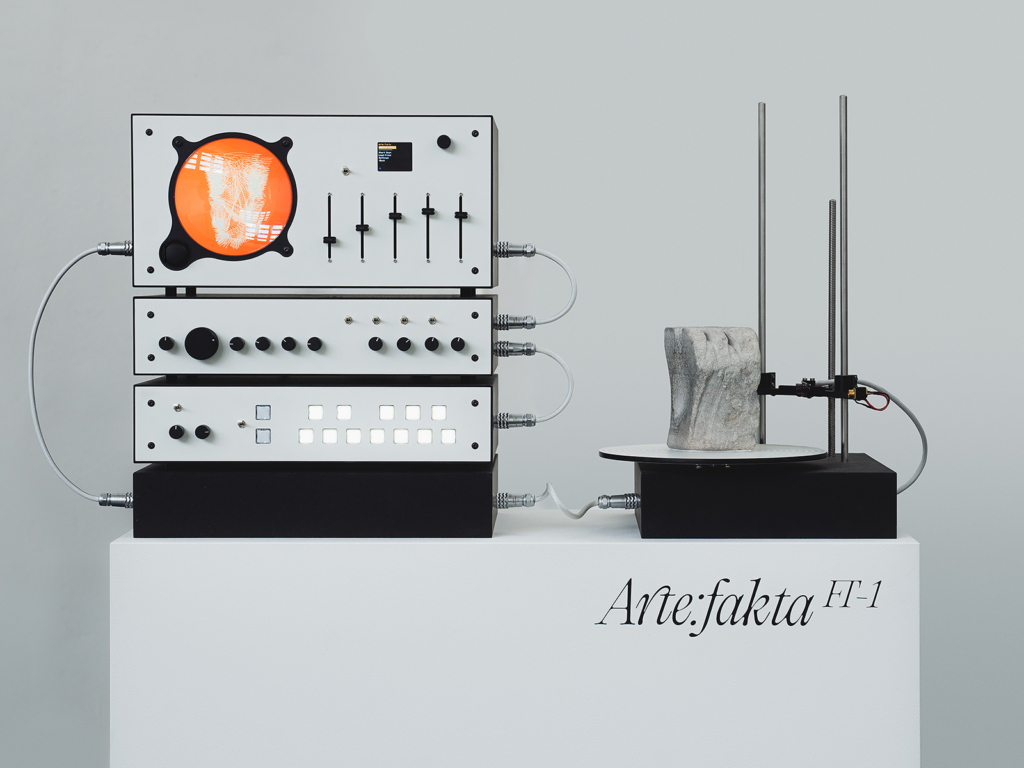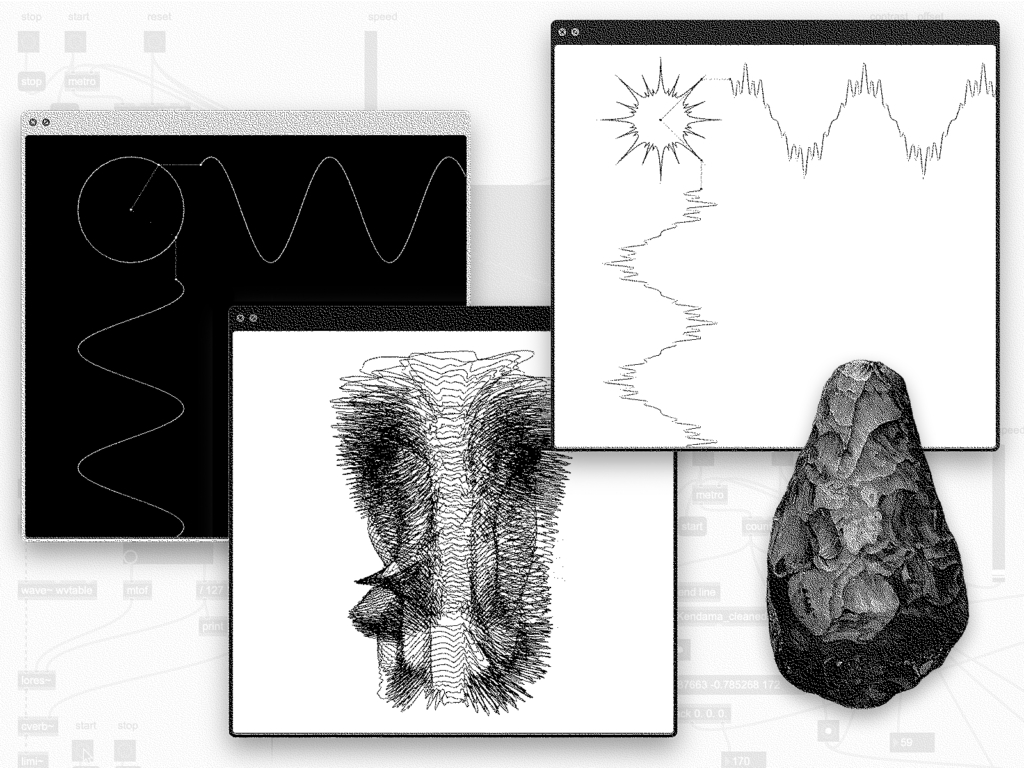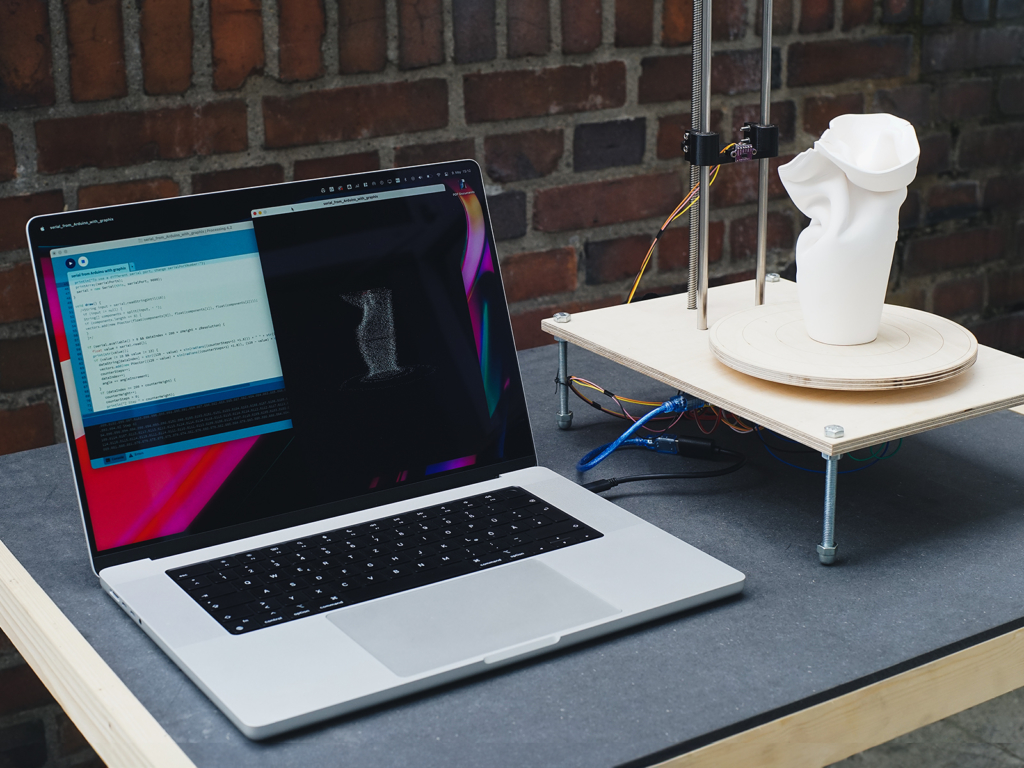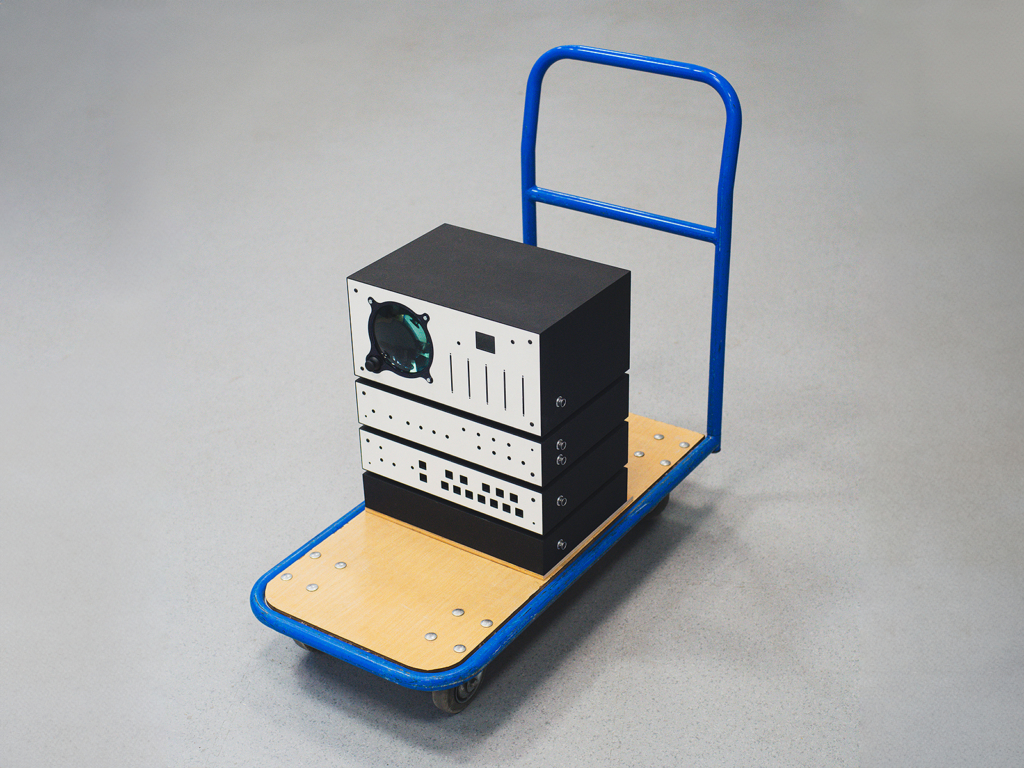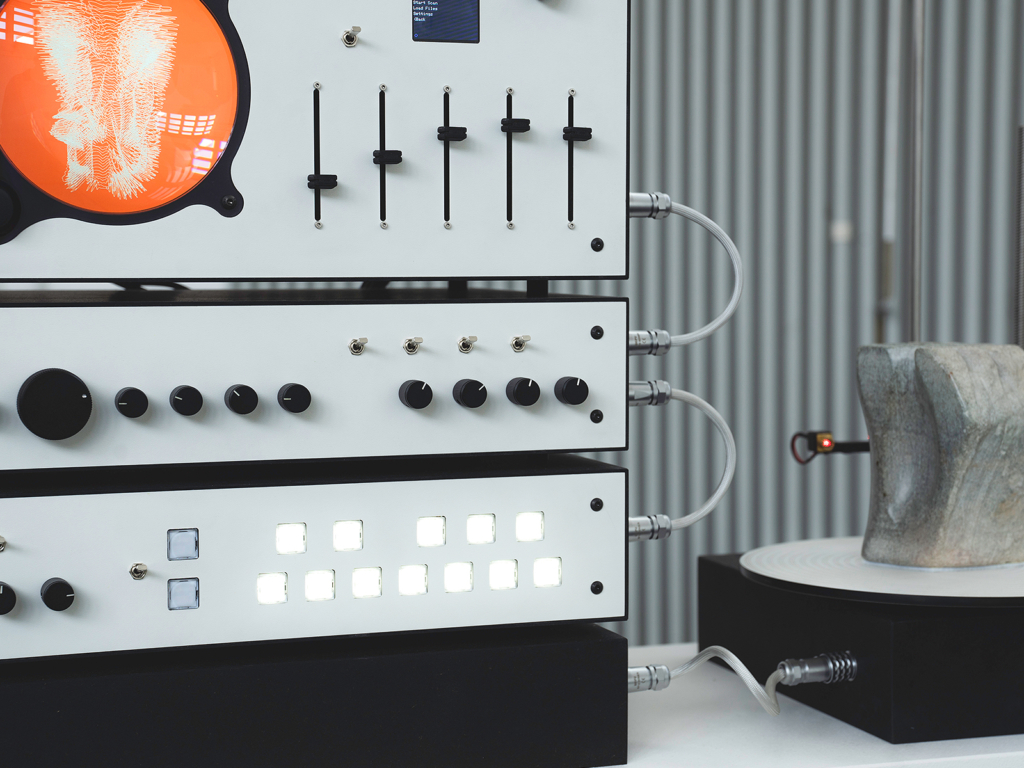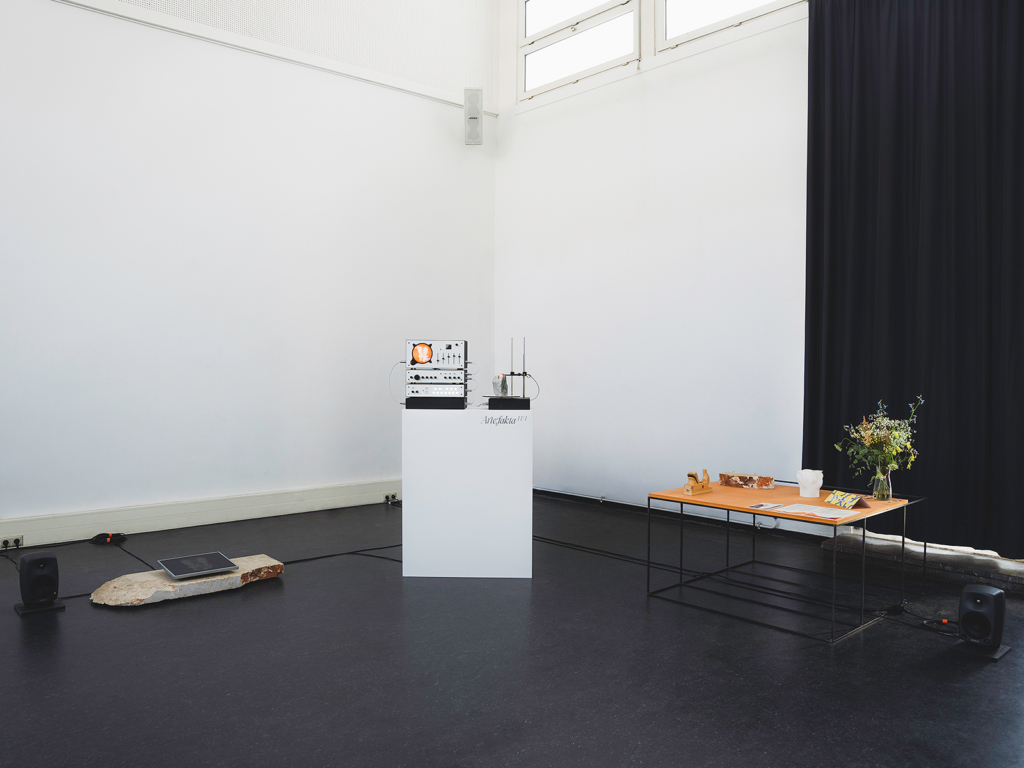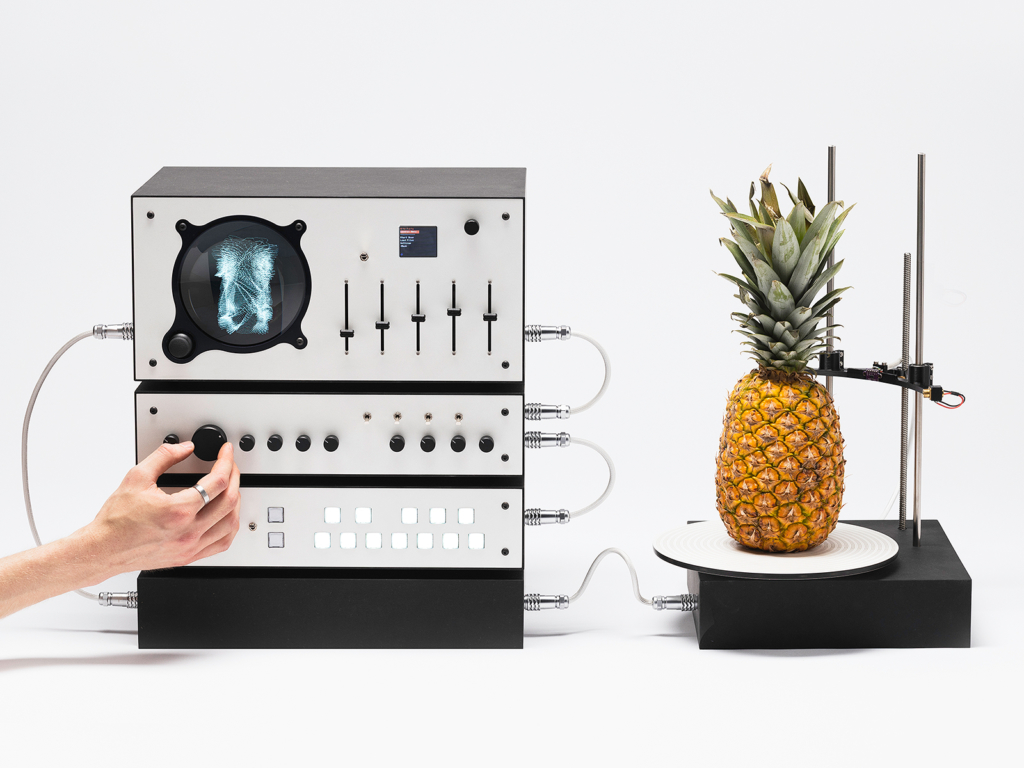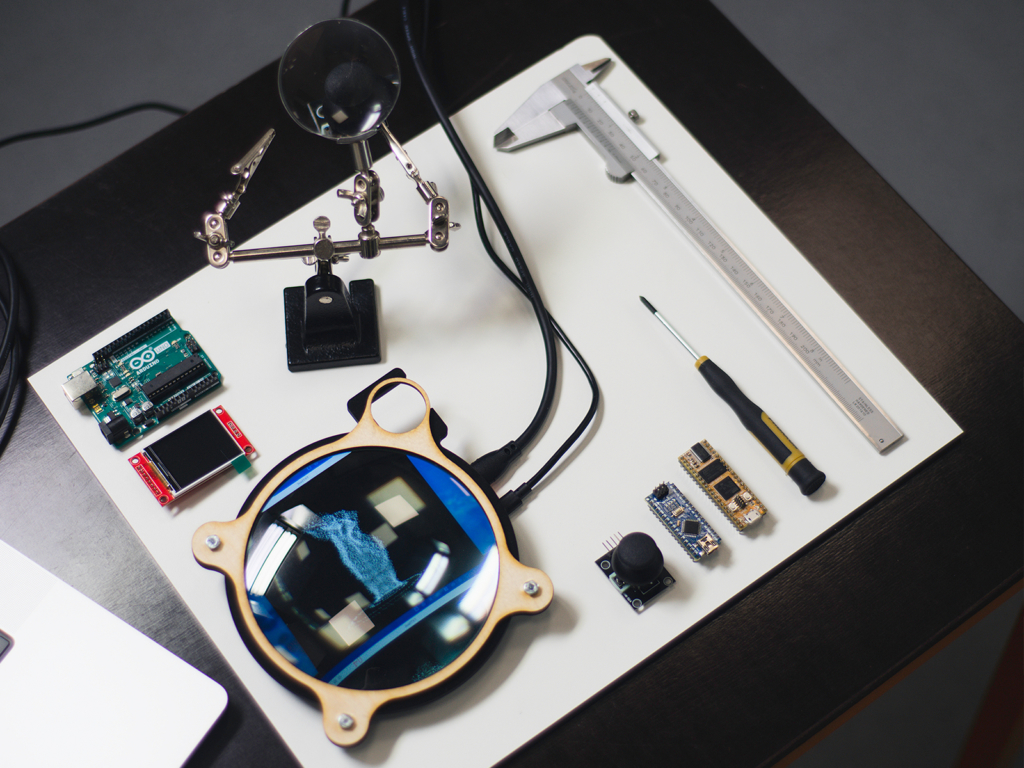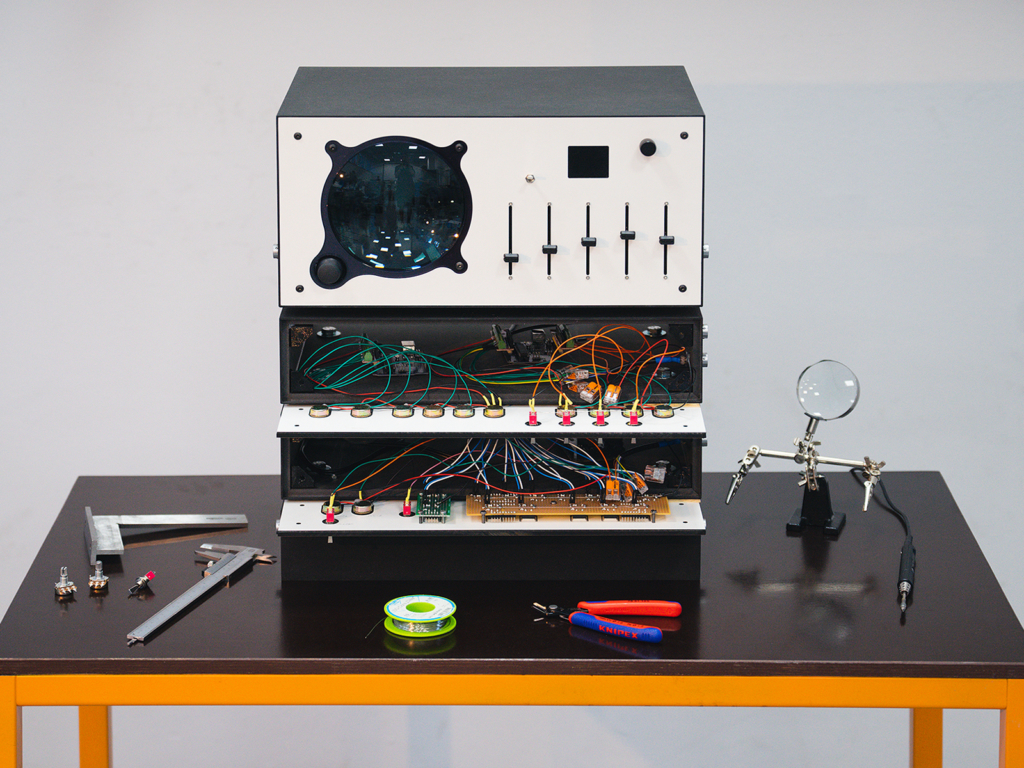How can we link the tangible and intangible and make everyday objects audible? What conclusions can be drawn about human perceptual processes and are alternative forms of perception conceivable? With his bachelor thesis "Klang-Körper", Julius Walsch presents an experimental synthesizer that has been significantly influenced by the interdisciplinary methodology of Artistic Research. The functional prototype transfers the surfaces of scanned objects - i.e. their physical form - into acoustic waveforms and thereby generates the so-called sound bodies (Klangkörper); acoustic images of an object that are linked to the original object by algorithmic projection and can be clearly assigned like a fingerprint. The synthesis method developed for this purpose expands the possibilities of experimental sound design and enriches the creative processes of electronic music through the acoustic exploration of physical artifacts and the integration of objects - and their sonic haptics - into the creative process. The work has been awarded third prize in the Cologne Design Award 2023.
The bachelor’s thesis documents the implementation of an object-based wavetable synthesizer and the generation of three-dimensional sound bodies using rotation-scanned artifacts. The aim of the transfer protocol is the derivation of topological characteristics of physical objects into a sonic spectrum of perception. The algorithmic gestalt-projection method developed as part of this bachelor’s thesis uses trigonometry to transfer two-dimensional characteristics of individual object layers into waveforms based on the unit circle principle. Through binaural viewing from two acoustic perspectives, this type of translation follows the stereoscopic principle of binocular perception, which enables the higher, third dimension of vision by merging two two-dimensional streams of information.
The proverbial body of sound created by the successive playback of the object layers is a mathematical image of its physical corporeality and is intertwined with it like a fingerprint. On the basis of the approach documented here, a mutually traceable correlation was created between the two aggregate states of a so-called Klangkörper, which dares to attempt to reduce the scope for artistic interpretation in audification.
The object becomes sound and the sound is form.
Another aspect of the development of this thesis is the design, production and programming of the
Arte:fakta FT-1 synthesizer. The aim of this project was to develop a functional prototype of a wavetable synthesizer that includes both an object scanner and a user-friendly human-machine interaction interface. The underlying principle of artifact measurement was explored using a rotation scanner and various prototypes, validated as a proof-of-concept and then integrated into a modular prototype, which situates itself between a research-oriented laboratory setup, an electronic musical instrument and an artistic installation. The FT-1 enables both the control and evaluation of the scanning process as well as the musical-artistic interaction with the “Klangkörper”.
Conventional wavetable synthesizers are based on pre-programmed waveforms for sound generation. In contrast, the synthesizer presented here uses the principles of machine vision to create a diverse library of sounds. By scanning the surface of an object, the synthesizer captures its intricate details, curves and topological features and translates them into these waveforms. Parameters such as playback speed, pitch, modulation and envelope shaping can be adjusted, allowing for expressive and dynamic sound design. The interface provides visual feedback and displays a graphical representation of the scanned artifact in real time. This promotes a deeper understanding of the origin of the synthesized sounds. The potential applications of the synthesizer are far-reaching. Music makers, artists and researchers can explore new sonic and musical territories by audifying various objects and drawing conclusions about human perceptual processes. The possibility of generating characteristic waveforms from everyday objects opens up a new level of creativity and experimentation and pushes the boundaries of traditional sound synthesis.
The Arte:fakta FT-1 strives to enrich the world of electronic music and sound design by integrating physical objects and artifacts into the synthesis process. By combining the tangible and intangible, this wavetable synthesizer opens up new possibilities for sound exploration and enables an experimental form of unique sound synthesis.
Photos by Julius Walsch
Photo no. 6 by Patrick Schwarz
